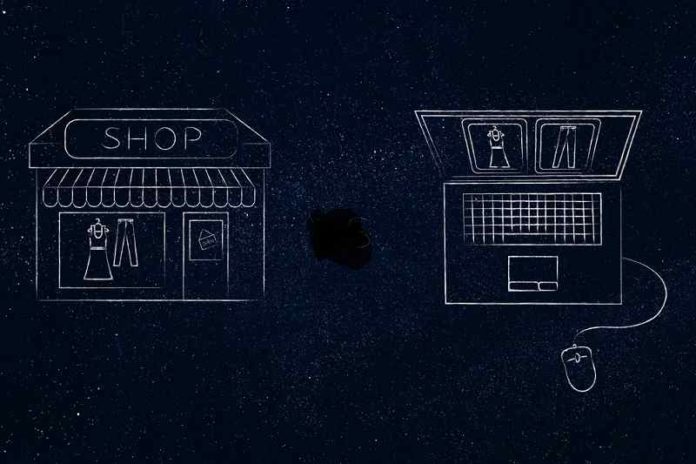Even in today’s digital world, brick and mortar stores aren’t going away any time soon. In fact, they are more relevant than ever for the cultivation of a close relationship with the customer and providing an exquisite shopping experience.
It’s crucial that brands learn how to complement their digital shopping experience in-store. Here are three of the most notable growing trends retailers are already witnessing in our new mixed-presence retail environment.
A Multi-Channel Experience
It’s a fact that online shopping has become far more common in recent years, with mobile usage growing considerably. In 2018, half of online shoppers reported using their mobile devices to make online purchases. This number will continue to rise as retailers invest more in a mobile-optimized experience.
To retain and draw in new customers, shopping experiences should be comprehensive, personalized, and interactive. Brands that provide a unique and holistic experience for their shoppers can create customers for life – not just for a one-time purchase. When customers have so many options, they expect to find a competitive edge in their favorite stores.
One way to achieve this is through a combination of multi-channel strategies, which require more technology in physical shops. Recent innovations like kiosks with endless-aisle solutions, product descriptions, and real customer reviews blur the line between physical shopping experiences and the wealth of data available to shoppers online.
In fact, many online stores are starting to create physical stores for their shoppers to have a more hands-on experience with their products. Amazon may be the most famous example of this, but even influencers have been opening retail stores – with wildly successful results. These influencers often appear in the top-10 most searched brands as a result of their real-world retail presence.
Because of this promising trend, online retailers are opening more brick-and-mortar locations. It’s a convenient way for consumers to return products, try on clothes, and see big items like furniture before they order.
While each company approaches their real-world presence differently, brick-and-mortar locations will continue to be a major factor in business trends throughout the near future.
Hassle-Free Buying
More brick and mortar stores will encourage consumers to join in the online interaction, such as in rewards-based marketing campaigns. Consumers are asked to post about a product and share their experience online to receive rewards or discounts that can be used immediately in-store. The advantages for businesses are two-fold, as customers develop both a closer relationship with their favorite brands while increasing awareness of the business online.
The modern amenities we expect in online shopping are becoming a major part of the real-world retail experience. Since there’s no check-out line in online retail, Amazon has developed technology that eliminates the need to line up to purchase products. In this way, in-store retail shopping becomes quicker and easier – and reduces labor costs for stores.
Buy online, pickup in-store (BOPIS) carries a similar consumer appeal. In-store pickup not only reduces shipping costs and drives traffic in-stores, but also allows companies to compete with Amazon and satisfy customer demands immediately. Physical shops are upping their game by taking the omnichannel route, a relatively new sales methodology that is gaining popularity because of the success of complementary experiences between online and offline interactions.
Today’s customer wants a fully integrated shopping experience, so they can buy what they want when they want no matter where their product search started (or where the purchase will ultimately take place).
Coupons As A Bridge
Finally, it’s no longer enough to promise everyday low prices when customers are accustomed to deals. Flash sales and blowout events online influence the brick-and-mortar experience in a number of ways.
Printable coupons are one effective tactic to keep abreast of these trends in consumer habits. Certain coupons can be discovered online but can only be used in-store. In this way, the brand not online engages with audiences online, but also provide a direct route to their showroom.
Customers can try out the product, ask any questions, and let the shop assistant identify the exact pain points and help recommend the best product. With a more tactile understanding of the product – and any other items of interest – customers make more informed decisions, and are more likely to recommend the store to their social network.
Coupons can also be used both in-store and online. As stores turn into showrooms for customers, the physical location can be used to capture data that informs the future of marketing – expanding the wealth of knowledge both on and offline.
The future of shopping is about choices and comprehensive experience. While the online shopping experience currently leads the way in customization, brands with a complementary brick-and-mortar presence will lead the way in developing the future of retail.
Consumers vote with their wallets now more than ever. It’s up to retailers to earn that vote by offering the kind of experience consumers can appreciate – one that’s blended and innovative for every type of customer.
Simone Wu is the Product Marketing Manager, and Coupon Specialist at CouponBirds, a company that helps customers discover the best deals and improve their shopping experiences. Simone holds a Master’s degree from the Shanghai International Studies University.
Brick and mortar stock photo by faithie/Shutterstock







